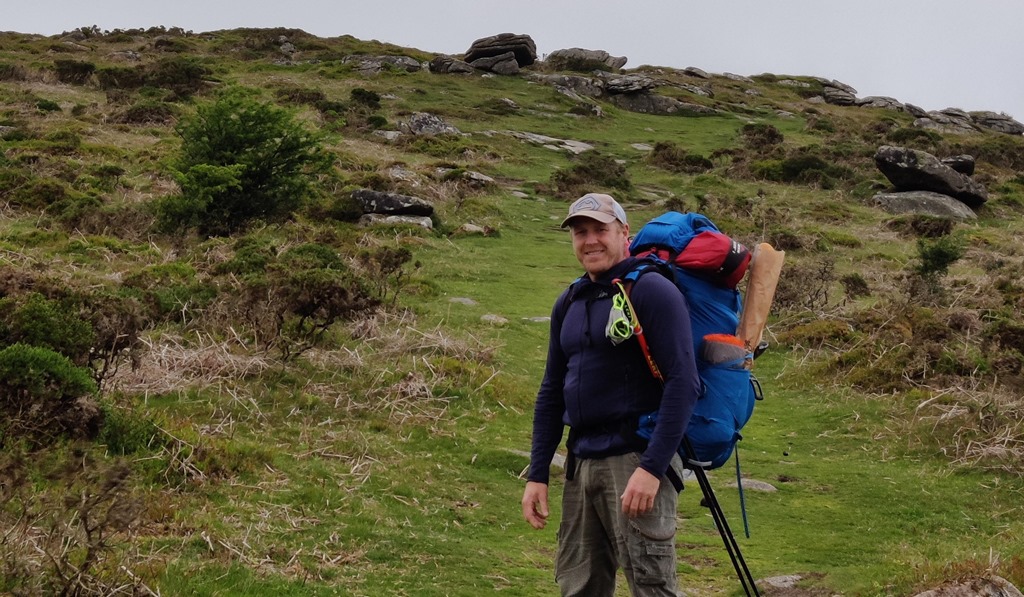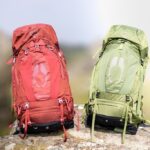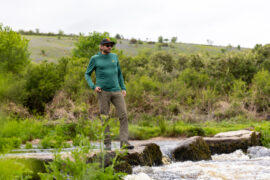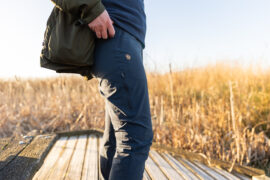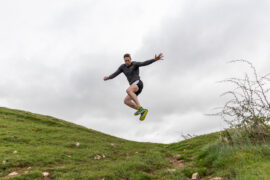Follow Nick B as he takes on Osprey’s ultra-lightweight trekking pack and gives his thoughts.
…
It’s May 2022 and newest version of the osprey Exos 58 has arrived, and I am excited to say, I got to test it for the last month or so.
This is the 4th generation of the Exos series and when they first burst on to the scene, they were really a revelation, ultra-light empty and when packed out with gear, still a pretty good carry.
I remember trying all the different sizes of the version 3 with our weight sacks in the shop and thinking they carried pretty well loaded up, but that the 58 litre version was the weaker one, slightly less well balanced than the 38 or 48 litre versions with the load pulling backwards a bit more and some sideways movement as well.
So, does the new model have improved carry comfort and performance? Well, the short answer is yes, I believe it does and more on that later.
Pack Updates
The new Exos 58 has had a few structural and feature improvements which are easy to highlight and you will find all the details of these on the product pages of our website HERE
If you don’t know what the old pack was like here are the highlights where the major differences have been made
- Fully recycled fabric construction and a PFC free DWR – Not a game changer in terms of the performance of the pack but it is a good sustainability story and important part of the future for us all and the brand and its environmental credentials.
- Wider frame for improved load carry & fit – Most of this seems to be in the shoulder harness area where there is a bigger distance between where the shoulder straps attach to the back system, improving comfort around the neck. It also translates to a slightly wider opening and a better less narrow shape in the upper part of the main pack compartment making getting stuff in and out of it really easy.
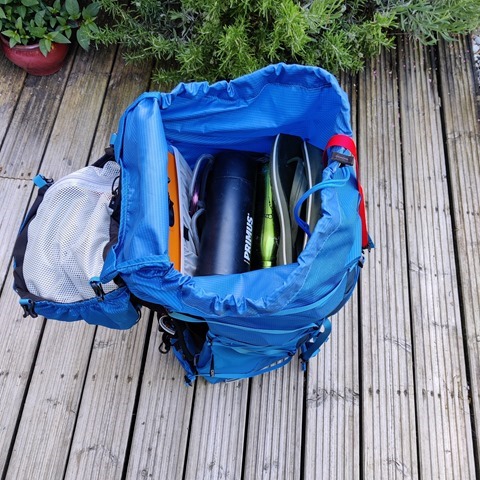
Back length adjustment using new injection moulded ladder + two back lengths for both series – The last version had three back lengths and the height adjustability was limited to the top adjusters on the shoulder straps making it more difficult to get a perfect fit, the new system is a massive improvement and very simple to use too (manufacturer pic of back system).
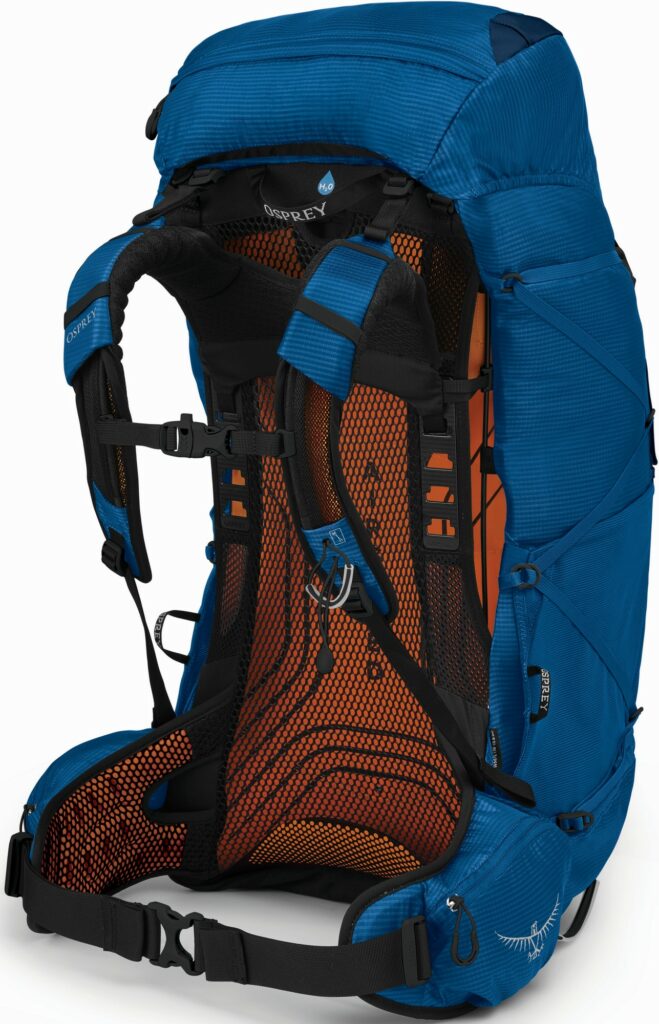
Hipbelt pockets! This might not seem a revelation as many packs have them now but version 3 did not as they were removed as a weight saving exercise.
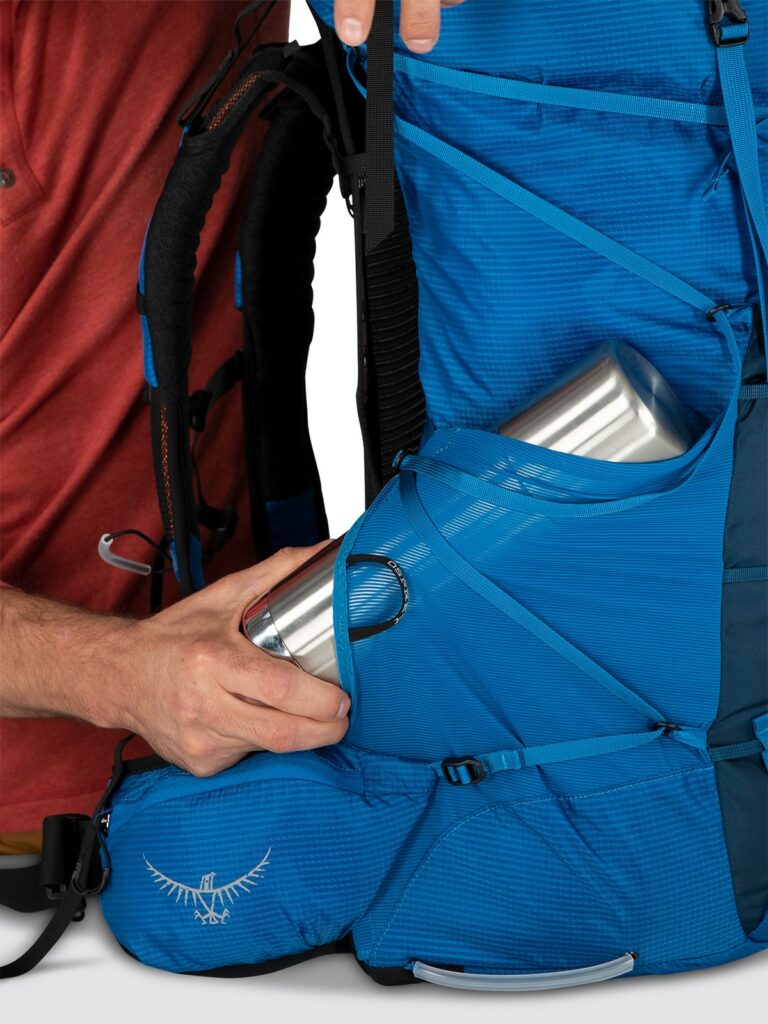
Pack Stats and Features
I think that although the Exos series has a pared down feature set, it is more than adequate for most people who will be using it for its primary purpose, carrying it day after day cross country. The main ones of note are outlined below.
- Weight – It tips in at just under 1.3kg for a 58L pack and has a recommended load carry up to 15/16kgs – The last version was 1230g so a small 50g increase which is more than made up for in the improved way it carries weight.
- Capacity – at 58 litres it is quite simply huge. This volume only includes the main pack compartment and the lid pocket. I managed to squeeze all my sport climbing kit and an overnight camping set up into it with a little room to spare which was quite a surprise. I have no doubts that you could carry 2 peoples worth of wild camping kit and enough food for a few days out if you wanted to The floating lid gives you even more capacity if you are pushed for space, and I would suggest if you are carrying a larger tent that this would be a great place to put it.
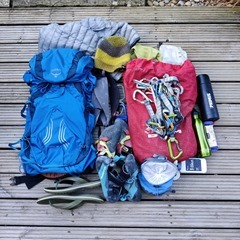
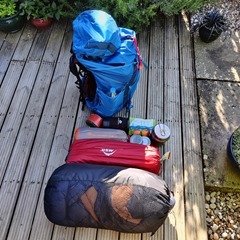
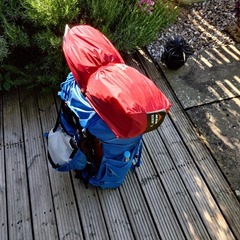
- Lid pocket – I think this is about4 litres capacity and is large enough for storing most of those bits and bobs you want easy access too like hats, gloves, headtorch, small first aid kit, snacks etc. It is also removable and there is a secondary lid underneath called the flap jacket that you can use to close the pack if you want to go super light. I am not sure the weight saving of 100g is worth losing this really useful storage area though.
- Side Pockets – The 2 side pockets are really quite large, easily fitting a 2 litre water bottle with room for other bits stuffed in there too. They are also dual entry and a 500-750ml bottle is easy to take in and out on the go. If you are going really light with your other camping items, I would suggest you could fit a lightweight 1 man tent in there pretty easily if you wanted too, they really will fit lots of stuff.
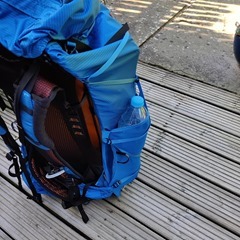
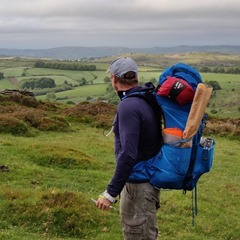
- Front Pocket – Also pretty big, you can squeeze 6 dried meals in there without too much bother but equally any awkwardly shaped light weight items will go in here as it has lots of stretch.
- Hip Belt Pockets – They are ok, unfortunately I think they are a little small and as they have no stretch, don’t fit a mobile phone or a compact camera very well. I found them a pain to do up as well, the zips seem quite stiff. They are only any good for small items you want to keep safe like keys, wallet and cash or small snacks I reckon
- Internal hydration pocket – Pretty big again, it will fit a 3 litre bladder with no problem and I think you could happily use it to separate out softer items like clothing if you don’t carry a water bladder.
- Stow on the go trekking pole attachment – Super easyto use andeffective at stashing a pair of poles temporarily, in fact you can walk indefinitely with them here rather than putting them away in your pack if you want.
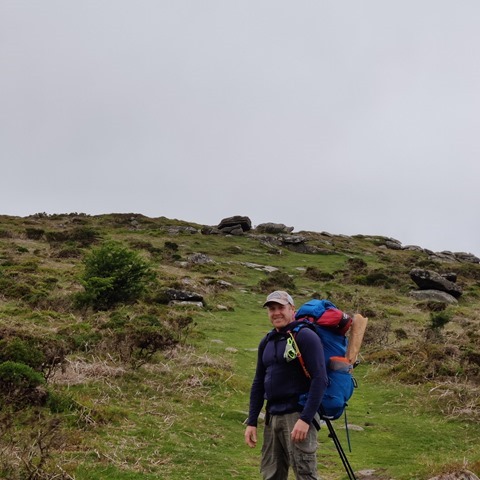
Back System and Harness
The Exos series bags use the Airspeed fully ventilated back system and it provides great comfort on the move, especially in hot conditions. The mesh back panel is strung under tension around a lightweight aluminium frame which creates the nice big air gap providing the ventilation which really works and the mesh is quite soft and comfortable even when just wearing a base layer.
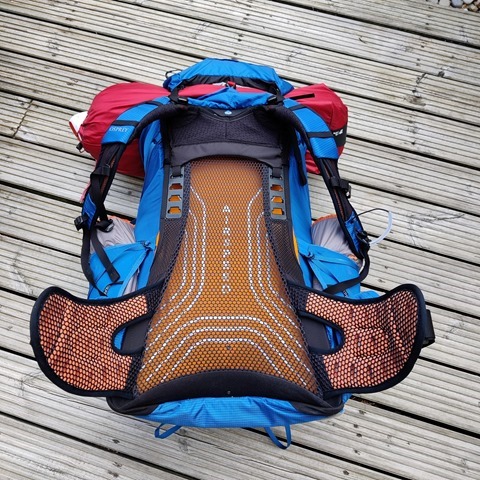
This does mean that the weight of the pack is held further away from you, however I have not felt like the pack is pulling me backwards which means it is less tiring to carry as it feels more natural to walk with.
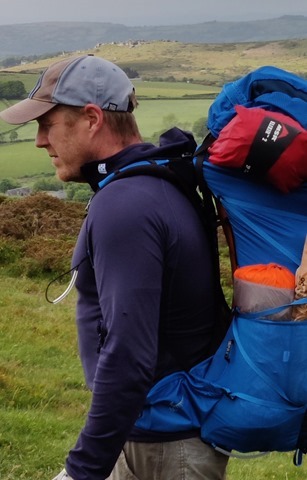
This could be in part due to the new Ladder adjustment system which allows you to get the back length just right in a matter of seconds. I am 5 foot 9 and almost at the limit of the S/M sizes adjustment, if you are any taller, I would look at the M/L size.
The shoulder straps and hip belt have changed very little with regard to padding, they are still pretty lightweight and use soft ventilated foam, however, I have found that the lack of chunky foam in these areas means they grip and conform better to your body and that seems to reduce the movement when the pack is loaded up which I really like. The shoulder straps are set a little wider than the old version I think, which makes more room around the neck. The chest strap also helps to adjust this width inwards if needed. I am not skinny by any means so this setup works really well for me.

The external Z adjusters also work well to reduce movement of your gear inside the pack when you are not using the full capacity which can aid stability when scrambling over rough or steep terrain. They are removable but unless you are the type of person that cuts their spoon in half to save weight, I am not sure why you would take them off. They do help to secure larger items in the side pockets as well.
Osprey suggest a max weight of 16KG for this model which is quite a lot in my opinion. I prefer to try and keep my pack weight down to around 10-12 kg normally if I am walking long distance days. However, I managed to squeeze an overnight luxury camp set of gear for 2 into the pack which weighed in at almost exactly the 16kg limit and walked a few miles out on Dartmoor to camp and it was pretty good. Carry comfort was not compromised too badly even though the pack was at its limit.
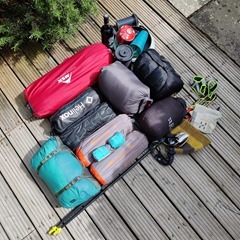
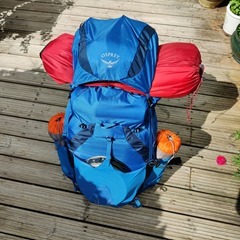
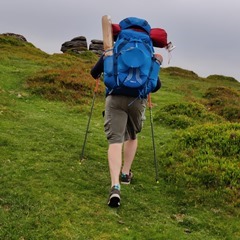
I have used it on several other occasions with one person’s gear in at a weight of about 10kg and you would barely know you have it on your back.
CONCLUSIONS
So has the 2022 version ironed out the weaknesses of the previous models? In my opinion yes.
Is it a massive step change from version 3?
Well in pure construction terms no, it is quite similar really, however the tweaks on the design such as the new back system do really improve the comfort of the pack making it feel noticeably lighter than the old version loaded with weight, which is pretty much the most important feature of a Rucksack in my opinion.
I am a big fan of not having stuff hanging off the outside of my pack so the 58 litre version means that if you are packing for one person it will easily all go inside the bag which is nice.
It is a shame about the hip pockets not being the best, this could have been improved I think.
The one thing it is missing is a rain cover. In the Uk this could spell disaster unless everything is in a pack liner or dry bags. Yes, the fabric is DWR treated, but that will only really hold off a shower.
If you are after a large, very lightweight pack with a ventilated back system that is really comfy when carrying a lot of kit over long distances I think it is really hard to beat, and would not hesitate to recommend trying one on in one of our stores or using the osprey pack fit tool to get the correct size https://www.ospreyeurope.com/gb_en/pack-sizer/.
…
This was written by Nick B, one of the Taunton Leisure buyers and outdoor experts. He spends most of his spare time climbing and running in the UK and Europe. His favourite day out would involve abseiling into a sea cliff followed by camping and an evening around the camp fire with his climbing partners.

